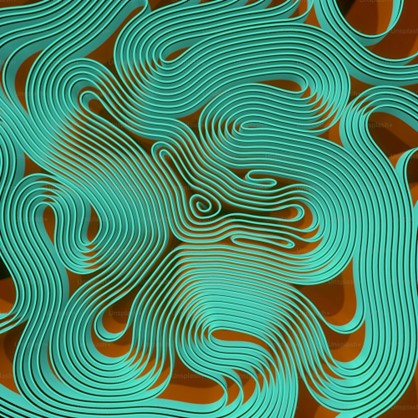Fear is a natural human emotion that arises when we sense danger or feel unsafe. It’s an instinctual response that prepares us to deal with the threat by either fighting or fleeing from it, also known as the fight or flight response. Fear can be helpful and even lifesaving in some situations as it makes us alert to danger. On the other hand, phobia is an intense, irrational fear of a particular object, situation, or activity that poses little or no real danger. In this article, we will explore the difference between fear and phobia, the most common types of phobias, their causes, and the available treatment options, and impacts on mental health.
What is Fear?
Fear is a basic human emotion that is programmed into the nervous system and works like an instinct. From the time we’re infants, we are equipped with the survival instincts necessary to respond with fear when we sense danger or feel unsafe. When we sense danger, the brain reacts instantly, sending signals that activate the nervous system. This causes physical responses, such as a faster heartbeat, rapid breathing, and an increase in blood pressure. Blood pumps to muscle groups to prepare the body for physical action (such as running or fighting). Skin sweats to keep the body cool.
This response is known as the “fight or flight” response because that is exactly what the body is preparing itself to do: fight off the danger or run fast to get away. The body stays in this state of fight-flight until the brain receives an “all clear” message and turns off the response. Sometimes fear is triggered by something that is startling or unexpected, even if it’s not actually dangerous. As soon as the brain gets enough information to realize there’s no danger, it turns off the fear reaction.
What is a Phobia?
A phobia is an intense, irrational fear of a specific object, situation, or activity that poses little or no real danger. The fear is out of proportion to the actual threat, and it persists even when the person knows that the fear is irrational. Phobias can cause significant distress and interfere with daily activities, work, and social relationships. People with phobias often go to great lengths to avoid the object or situation that triggers their fear, which can lead to a restricted and isolated lifestyle.
Phobias are a type of anxiety disorder, and they are one of the most common forms of mental illness. According to the National Institute of Mental Health, about 10% of people have a phobia at some point in their lives, and women are more likely to develop phobias than men.
Types of Phobias
Phobias can be classified into three categories: specific phobias, social phobia, and agoraphobia. Specific phobias are the most common type of phobia and involve an intense fear of a specific object or situation, such as animals, heights, or flying. Social phobia, also known as social anxiety disorder, is an intense fear of social situations and being judged or scrutinized by others. Agoraphobia is a fear of being in situations or places where help may not be available or escape might be difficult, such as crowded spaces, traveling alone, or being far from home.
Specific Phobias
Specific phobias are the most common type of phobia, and they involve an intense fear of a specific object or situation that poses little or no real danger. Some of the most common specific phobias include:
- Animal phobias, such as a fear of spiders, snakes, or dogs.
- Natural environment phobias, such as a fear of heights, storms, or water.
- Blood-injection-injury phobias, such as a fear of needles, injections, or medical procedures.
- Situational phobias, such as a fear of flying, driving, or enclosed spaces.
- Other phobias, such as a fear of choking, vomiting, or loud noises.
Causes of Phobias
The exact cause of phobias is not fully understood, but researchers believe that a combination of genetic, biological, and environmental factors may contribute to their development. Some possible causes of phobias include:
- Genetics: Studies have shown that specific phobias may run in families, suggesting that there may be a genetic component to their development.
- Brain chemistry: Some research suggests that an imbalance in certain neurotransmitters in the brain, such as serotonin or dopamine, may play a role in the development of anxiety disorders, including phobias.
- Traumatic experiences: Phobias can develop after a traumatic experience, such as being bitten by a dog or experiencing a panic attack in an enclosed space.
- Learned behavior: Phobias can be learned through direct or indirect experiences, such as observing the fearful behavior of others or being taught to fear certain objects or situations.
Treatment for Phobias
Phobias can be treated using a variety of approaches, including medication, psychotherapy, and self-help strategies. The most effective treatment for phobias is exposure therapy, which involves gradually exposing the person to the feared object or situation in a safe and controlled environment, allowing them to confront and overcome their fear. Exposure therapy can be done with a therapist or through self-help techniques, such as virtual reality exposure therapy or online self-help programs.
Medications may also be used to treat phobias, particularly in combination with psychotherapy. Antidepressants, such as selective serotonin reuptake inhibitors (SSRIs), and benzodiazepines, such as Valium or Xanax, can be effective in reducing anxiety and helping people manage their phobias.
Self-help strategies, such as relaxation techniques, stress management, and cognitive-behavioral therapy, can also be helpful in managing phobias. These strategies involve learning to identify and challenge negative thoughts and beliefs that contribute to anxiety and fear.
Conclusion
In summary, fear and phobia are both related to the perception of danger and can cause significant distress and interference with daily activities. Fear is a natural response to a real or perceived threat, while a phobia is an intense, irrational fear of a specific object or situation that poses little or no real danger. Phobias are a type of anxiety disorder and can be treated using a variety of approaches, including exposure therapy, medication, and self-help strategies. Mental health training can help individuals and organizations better understand and manage phobias, promoting a safer and more supportive workplace environment.
WHS and Training Compliance Solutions training programs will set up your business success, and apply all business settings. (Mining, retail, school, corner shop, restaurant and many more)
Prevention and first aid are the key components of a successful, efficient, and productive organisations in today’s society. There are advantages such as reduced absenteeism, presenteeism, workers compensation premiums, and proactive risk prevention on psychological health. We have a focus on promoting mental wellbeing and preventing mental health problems.
Check out our mental health training programs. We have extensive mental health training programs, servicing across Townsville, Toowoomba, Brisbane and other regions in Australia.
Preventative Programs: Stress Management, Anger Management and Developing a Resilient Mindset
Mental Health First Aid Programs: Mental Health First Aid, Youth Mental Health First Aid
For more information on mental health training you can Send email phone 0754 992 406.
Access Mental Health Awareness Books from Amazon: Mental Health Books












